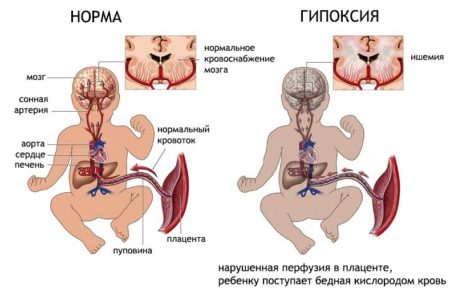Hematocrit is below normal - what does this mean?
A low hematocrit in an adult indicates a reduction in the number of red blood cells in the blood. In this case, the doctor will prescribe additional laboratory tests and instrumental diagnostic methods.
Among the laboratory indicators, it is important to determine: the level of iron and ferritin, as well as evaluate the biochemical parameters of the blood. Of the instrumental methods, it is preferable to conduct an ultrasound examination of the digestive organs, liver and pelvis
Based on the results of a comprehensive examination and the patient’s collected medical history, the doctor determines the cause of the low hematocrit.
It should be borne in mind that if a woman submitted biomaterial for analysis during menstruation, then the hematocrit is below normal - this is a standard phenomenon. During this period, the woman loses a certain amount of blood, which means the level of red blood cells decreases somewhat.
It is important to follow the rules for preparing the patient, as well as taking and transporting biomaterial. During venipuncture, red blood cells in the tube may be destroyed (hemolysis)
For example, due to strong or prolonged compression of the site of biomaterial collection with a tourniquet or due to incorrect storage temperature of the collected blood. The readings obtained cannot be considered reliable, and the patient will definitely need to take the biomaterial again.
Increased hematocrit
An elevated hematocrit is normally detected in newborns. Hematocrit increases by two main mechanisms: an increase in formed elements in relation to plasma and a decrease in the amount of blood plasma in relation to formed elements. Externally, these mechanisms manifest themselves in different ways. Let's look at the main situations of increased hematocrit and their external manifestations.
An increase in hematocrit is possible in several cases.
Hypoxia
What should be the normal level of platelets in children and the consequences of deviations from the norm are described in the article
In children, the most common causes of hypoxia - lack of oxygen - are a long anhydrous period during childbirth, as well as diseases of the respiratory system. In such a stressful, oxygen-deprived situation, the body begins to produce more red blood cells to increase hemoglobin, so the hematocrit increases. The mechanism of the increase is that the content of blood cells increases with a relatively constant amount of plasma (liquid part) of the blood. Externally, this often manifests itself as redness of the skin.
.
As a rule, this condition occurs during the newborn period and is normal: the baby undergoes adaptation after the intrauterine period. In this case, the increase in hematocrit is not a pathology and does not require treatment.
Dehydration
The most common cause of dehydration (dehydration of the body) is acute intestinal infections, diseases of the gastrointestinal tract, and burns. In this situation, the mechanism for increasing hematocrit is directly opposite to hypoxia: with a relatively constant amount of formed elements, blood plasma (liquid part) is lost, and, accordingly, the hematocrit increases.
Symptoms:
- pallor;
- dry skin;
- weight loss;
- feeling of thirst.
Dehydration can be critical for a child’s life; the main indicator is a loss of body weight of more than 3%, in which case you should immediately consult a doctor.
If the dehydration is mild, then treatment at home will consist of soldering with electrolyte solutions (for example, based on the drug Regidron). It is necessary to follow certain rules - drinks should be given often, but in small quantities. You should not “pour” a liter of liquid into your child per hour: this will cause nothing but vomiting. But a few sips every 10-15 minutes during the day and good sleep will help return the child to good health. It is also necessary to carefully monitor urination; the child should not lose more than 80% of the liquid he drinks. When dehydration occurs, a child loses more fluid than he or she takes in. In the clinic, infusion therapy (droppers) is performed to restore lost fluid.
Blood diseases
Hematocrit may also increase in case of coagulation disorders - in case of blood diseases that are associated with an increase in its coagulability and thickness. The mechanism for increasing hematocrit is an increase in blood cells relative to plasma. Coagulation disorders are usually diagnosed when bleeding or rash appears; the detection of an increased hematocrit in this case occurs during diagnosis confirmation.
At-risk groups
A child's hematocrit is almost always at the same level and changes slightly only with age, during the growth of the child's body. But there are groups of children in whom the hemotocrit number may change pathologically. Pediatricians classify such children as a risk group, and they are registered at the dispensary.
The risk group includes:
- Newborns born with a large body weight and infants who pathologically quickly gain weight.
- Children who eat poorly or suffer from metabolic disorders.
- Children with a tendency to develop iron deficiency anemia.
- Newborns with congenital abnormalities of the liver and kidneys.
These children need careful monitoring and exclusion of all provoking factors. If the underlying disease can be cured, the erythrocyte composition will soon stabilize without specific treatment.
Is a low hematocrit level dangerous? Regardless of the cause that caused it, this condition is dangerous because it disrupts the supply of oxygen to the cells of the child’s body. If this condition persists for a long time, it will negatively affect the growth and development of children.
We were planning to vaccinate our child the other day. We got tested today. Leukocytes are low - 4.8, while the norms for children's analysis are 6.0-17.5. A month ago, leukocytes were 7.6. I was tempted to read what this means. I broke into a cold sweat... Diseases of the blood, bone marrow... I'm already shaking. What to do and where to run?
Blood diseases
Hematocrit may also increase in case of coagulation disorders - in case of blood diseases that are associated with an increase in its coagulability and thickness.
The mechanism for increasing hematocrit is an increase in blood cells relative to plasma.
Coagulation disorders are usually diagnosed by the appearance of bleeding or rash; detection of an increased hematocrit in this case occurs during confirmation of the diagnosis.
The mechanism of reduced hematocrit is the opposite: the hematocrit will be reduced in cases where the number of formed elements decreases with a normal amount of plasma, or when the volume of plasma increases in relation to the normal amount of formed elements. External manifestations of a low hematocrit can be different. There are also several reasons for a decrease in hematocrit.
Deviations
When the hematocrit in a child’s blood test is elevated, this is clearly visible. The child’s blood becomes very viscous and thick, this is explained by an increase in the number of formed elements relative to the total volume of blood fluid.
Here you should pay attention to the age of the child. If in children under one year of age the hematocrit increases by 10-12%, then there is nothing to fear, this is due to the physiology of the baby. It’s another matter when deviations in indicators progress in a child older than 1 year, which may indicate the development of various diseases.
Until one year of age, hematocrit deviations in children are considered normal.
Causes of increased hematocrit in the blood in children:
- Recent injuries and burns (with them, the volume of red blood cells in the blood increases to saturate the body with oxygen, since with good saturation the regeneration process occurs many times faster).
- Respiratory diseases.
- Intestinal obstruction.
- Blood leukemia.
- In some cases, long-term medication use and much more.
Normal for children and adults
The hematocrit norm varies among the adult population depending on gender, as well as other physiological criteria of the patient. In women, the norm is considered to be a concentration of 36 to 42%. Women have a lower hematocrit than men. This is due to the fact that the fairer sex undergoes a monthly blood change.
Thus, we can say that in reproductive age (18-45 years) the norm for hematocrit in women is 35-45%; after 45 years, 35-47% is considered normal.
During gestation, not only hormonal levels change, but also the location of organs, so the volume of fluid in a woman’s body increases and the hematocrit level decreases. If pregnancy proceeds normally, the hematocrit is considered to be 30-40% as normal. Moreover:
- in the first trimester the norm is 33-36%;
- in the second – 34-37%;
- in the third – 32-34%.
As for the male gender, 44-48% is considered the norm. And the higher the age, the higher the indicator of this analysis in men. In some cases, even 50% is considered the norm after 50 years.
This is due to age-related dehydration of the body, which of course significantly affects plasma volume. In children, the hematocrit norm varies depending on the age of the child.
The average norm can be called 37-44%.
Wherein:
- in a newborn, the norm is 44-62%, after which the level begins to gradually decrease;
- later the indicators increase, by 6 years the norm is 34-40%;
- in adolescents aged 12 years – 35-45%.
Norm
The hematocrit number is usually calculated as a percentage. However, in recent years, with the increasing use of special equipment - hemoanalyzers - in laboratory practice, there has been a transition to the use of other units of measurement. Modern laboratory equipment calculates hematocrit in l/l.
The hematocrit norm is a value that depends on gender and age category.
change over the first six years, showing a downward trend:
- only born children – 33 – 65%;
- children under 1 year – 33 – 44%;
- children aged 1 – 5 years – 32 – 41%;
- children over 6 years old – 33 – 44%.
- male population aged 18 – 45 years – 39 – 49%;
- male population over 45 years old – 40 – 50%;
- female population 18 – 45 years old – 35 – 45%;
- women over 45 years old – 35 – 47%.
From a therapeutic point of view, it is acceptable to identify a decreased blood pressure, since this is associated with an increase in the volume of circulating blood in a woman’s body against the background of an unchanged quantitative composition of formed blood cells.
What diseases will a downward change in hematocrit indicate?
Most often, a blood test, according to which the hematocrit is low, indicates the development of one of these painful conditions:
- anemia. the number of red blood cells decreases and, as a consequence of this reason, a decreased hematocrit occurs;
- inflammation. mostly chronic form;
- malignant neoplasms;
- kidney and vascular diseases. the proportion of plasma in the blood increases.
if the volume of red blood cells in the blood is reduced, then it is necessary to do a full examination for the presence of the listed diseases. Only identifying the true cause of changes in hematocrit will allow the necessary treatment and normalization of this indicator.
Pathological reasons for the increase
An abnormal increase in red blood cell levels is called polycetomy. Polycetomy can have both congenital and acquired causes. Primary or congenital polycythamia develops against the background of pathologies of the bone marrow, where red blood cells are born.
Among the pathological causes of high hematocrit are:
- Lung diseases of various types.
- Heart diseases.
- Anemia.
- Intestinal diseases.
- Pathological processes in the liver.
- Diabetes.
- Blood oncology.
- Kidney diseases.
- Burns.
- Injuries.
When interpreting the analysis and making a diagnosis, it is important to take into account other blood parameters that may indicate the presence of pathology. If an elevated hematocrit is detected, treatment is carried out in accordance with the doctor’s prescription.
This is not an independent disease and in order to reduce the level of hematocrit in the blood, it is necessary to treat the underlying disease.
You can suspect that you have a high hematocrit based on the following symptoms:
- Frequent sudden dizziness.
- Nausea.
- Numbness of the limbs.
- Difficulty breathing.
The danger of exceeding hematocrit values is the possibility of developing thrombosis and heart disease. With this deviation, blood becomes viscous and moves along the river with difficulty.
Reasons for increased hematocrit
If the hematocrit in the blood is increased, this does not mean that bacteria have entered the body or diseases are developing. This phenomenon may be associated with a physical and psychological state that is disrupted as a result of exposure to external factors. In such cases, an increase in hematocrit does not affect the health and condition of the child. There are 6 reasons for increased red blood cell levels.
- Plasma loss and dehydration. Dehydration occurs as a result of loss of fluid in the body, which occurs with excessive diarrhea, vomiting, or after vigorous physical activity. Water leaves the body, a compensation process occurs, and therefore the level of blood cells rises.
- Injuries or burns. With burns and severe injuries to the skin, the wounds begin to become overgrown with blood clots, and because of this, the level of red blood cells increases, especially in children, since their body is not sufficiently formed and strengthened.
- Erythremia. A bone marrow tumor in which blood cells are produced more intensively. The reasons are different, but an increase in red blood cells threatens the emergence of dangerous blood diseases.
- Kidney diseases. During diseases and inflammatory processes in the kidneys, red blood cells increase, since the body's metabolism is completely or partially disrupted. These may be tumors or polycystic disease, due to which most of the fluid is lost in the urine and red blood cells increase.
- Use of drugs and antibiotics. If you often use antibiotics and drugs in large quantities, this threatens to impair the child’s condition, and the level of red blood cells in the blood will rise.
- Anemia or leukemia. Perhaps anemia begins to develop in the blood, which is caused by a lack of hemoglobin. If treatment is not taken on time, this threatens the development of leukemia, as a result of which the level of red blood cells will begin to increase inexorably.

Normal and pathological blood supply to the brain
Reasons for rejection
Hematocrit is lowered when blood volume increases or the number of red blood cells decreases. In both cases, the proportional ratio of red blood cells to plasma decreases. This can happen with the following conditions or diseases:
- Blood loss. BCC is quickly restored when infused with physiological solutions, but for red blood cells this takes time. In women, this is associated with heavy menstruation, fibroids and other gynecological pathologies. Other causes of blood loss are injuries and ulcers of the gastrointestinal tract or bladder, for example, due to cancer or polyps, and broken limbs.
- Decreased synthesis of reticulocytes - young red blood cells in the bone marrow. This is observed with kidney paresis, anemia, leukemia, leukemia, treatment with antitumor drugs and cytostatics.
- Intensive breakdown of red blood cells. Associated with congenital or acquired hemolytic anemias, autoimmune diseases, serious infections such as malaria or typhoid fever. The cause may also be poisoning with hemolytic poisons in case of contact with heavy metals or toadstool.
- Intravenous fluid administration in large quantities. This is the cause of low hematocrit in patients with impaired renal function. The introduction of fluid causes an increase in their blood volume. The level of red blood cells remains acceptable, which is why their concentration is significantly reduced.
- Pregnancy. Against the background of an increase in the amount of plasma, the number of red blood cells remains unchanged, which is why the hematocrit number decreases. This condition is especially typical during late pregnancy.
- Overhydration. This is an increase in the volume of circulating blood while the number of red blood cells remains unchanged. This is observed with water intoxication, decreased functional capacity of the excretory system, circulatory failure, renal failure, poisoning, infectious or viral disease.
- Hyperproteinemia. It is formed as a result of various diseases: Hodgkin's lymphoma, myelodysplastic syndrome, diarrhea, vomiting, paraproteinemic hemoblastosis. They cause an increase in protein in the blood, which causes fluid to accumulate in the body and increases the volume of blood volume. Red blood cells remain unchanged in quantity.
- Nutrient deficiency. The reason for the decrease in blood density is a lack of folic acid, vitamin B and iron.
Analysis transcript
Normal indicators
Age-specific hematocrit norms are presented in Table 1.
Table 1. Hematocrit norms in children
| Age | Norm |
| 2 weeks | 40 – 65% |
| 2 weeks – 1 month | 33 – 55 % |
| 1 month – 6 years | 32 – 40 % |
| 6 – 12 years | 33 – 43 % |
| Over 12 years old = adults - men - women | 40 – 48 % |
| 36 – 42 % |
Conditions in which the hematocrit is reduced in a child
Why is the hematocrit low, what does this mean? Let's try to figure it out. If the hematocrit is low, this indicates conditions in which:
- reduced volume of formed cells, for example, with anemia;
- increased blood plasma volume - due to plasma transfusion or overhydration, for example.
There are also situations in which a false decrease in hematocrit is possible:
- red blood cells stick together;
- The number of red blood cells is normal, but they are very small in size (microcytes).
Increased hematocrit
Conditions when the hematocrit is elevated in a child may be as follows:
- decrease in blood plasma volume in various diseases, for example, burn disease;
- increased number of red blood cells - erythrocytosis.
If the CBC shows that the number of red blood cells is normal and they are of normal volume, then an increase in hematocrit indicates dehydration.
What can distort the result?
A false increase in hematocrit occurs in the following cases:
- high white blood cell count;
- giant platelets;
- high blood sugar;
- decreased blood pH – acidosis.











